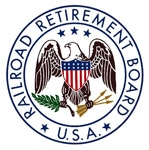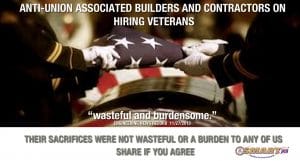Rail labor organizations and rail management through the National Carriers Conference Committee have reached an accord to extend medical, dental and vision benefits to same-sex couple spouses, effective Jan. 1, 2014.
The plans affected are the National Railway Carriers/UTU Health and Welfare Plan, the Railroad Employees National Health and Welfare Plan, the Early Retirement Health and Welfare Plan, the Railroad Employees’ National Dental Plan and the Railroad Employees National Vision Plan.
The NCCC states that there is no requirement under applicable law or under the current collective bargaining agreement to provide this coverage, but the change was agreed upon based on recent changes to federal law allowing same-sex couples to access federal tax benefits provided to other married couples.
Railroads participating in the aforementioned health care plans will be announcing these changes on their company websites and will notify employees in the near future by mail.
The announcement comes one day after a lawsuit was filed Dec. 3 in U.S. District Court in Seattle that said same-sex spouses were routinely denied medical coverage. The employees filing the suit worked for BNSF Railway.
SMART Transportation Division President John Previsich said the parties had recently concluded the discussions to extend benefits to same sex married couples, and formal announcement was on hold pending the resolution of final details. That announcement was moved up, said Previsich, to inform affected members and avoid unnecessary litigation on the matter.
The Seattle lawsuit was filed by two engineers – one man and one woman – and their same-sex spouses. It says BNSF had a “stated policy” that “one man and one woman” is what constitutes marriage. “BNSF does not get to judge what marriage is,” the suit said.
BNSF, which is owned by Omaha’s Berkshire Hathaway Inc., said the matter was properly handled through the National Railway Labor Conference, which could have handled it either through collective bargaining or, as it did, via the governing committee.
“This was the correct way to deal with the issue, as our prior statement indicated,” said Steve Forsberg, BNSF’s director of external relations. “Changes to the plan must come through the collective bargaining process or through the plan’s governing committee because the agreement involves multiple employers and multiple unions.”
Spouses of salaried employees in same-sex unions, Forsberg said, are eligible for health care coverage if they were married in a state where such marriages are legal. Such unions are not legal in Nebraska, where BNSF employs about 5,000 people.
Year: 2013
TWO HARBORS, Minn. – Authorities are investigating what caused a train to derail just south of Two Harbors, Minn., Thursday (Dec. 5) afternoon.
The Lake County Sheriff’s Office, along with Two Harbors Police, the Minnesota DNR and rescue squads were called to the incident around 1:15 p.m.
Read the complete story at Northlands Newscenter.
This incident occurred despite prior notices from the SMART Transportation Division’s Minnesota State Legislative Board asking railroads operating in northern Minnesota to prepare for inclement weather.
According to reports from SMART TD local officers in Minnesota, Canadian National Railway has not reacted appropriately to the severe weather conditions, Minnesota State Legislative Director Phillip Qualy said.
Reportedly, CN had six runaways on Steelton Hill in the last 30 hours after nearly three feet of snow fell in northern Minnesota.
The board reports that CN has not flanged or winged hills properly, despite the availability maintenance-of-way crews on equipment, waiting for track time.
To view copies of SMART TD’s letters to CN, BNSF Railway, Canadian Pacific, Union Pacific and Red River Valley & Western Railroad regarding winter safety action plans, snow removal and maintenance of way, click Winter_Safety_Letters_MSLB_120213.
The board asks that local officers post copies of the letters on all on-property bulletin boards.
The board also asks that, as always, members report all unsafe conditions immediately, including switches, switch channels, walkways, roads, crew-change locations and industry tracks not cleared of snow, sanded, salted or maintained.

“Safety is our highest priority, and we must do everything we can to learn from this tragic crash and help prevent future derailments,” said U.S. Transportation Secretary Anthony Foxx. “While we assist the National Transportation Safety Board in carrying out its investigation, this Emergency Order will help ensure that other Metro-North trains travel at appropriate, safe speeds.”
EO 29 requires Metro-North to provide the FRA with a list of main track locations where there is a reduction of more than 20 mph in the maximum authorized passenger train speed by Dec. 10, 2013. Further, Metro-North is ordered to identify appropriate modifications to its existing automatic train control system or other signal systems to enable adequate advance warning of and adherence to such speed restrictions. These modifications will help prevent another over-the-speed-limit event if a locomotive engineer fails to take actions to appropriately slow or stop a passenger train.
In the meantime, Metro-North is ordered to operate trains with two qualified train crew members in the controlling locomotive cab or passenger car control compartment at the locations where speed limits change by 20 mph or more until the signal work at these locations is complete. Additionally, the railroad must submit to the FRA for approval an Action Plan that ensures the safety of its operations for passengers and employees by Dec. 31. The plan must contain target dates and milestones for implementing necessary signal system modifications.
“Last year was the safest on record for our nation’s rail industry,” said FRA Administrator Joseph C. Szabo. “Even with a 43 percent decline in train accidents nation-wide over the past decade, we must remain steadfast and vigilant to ensure passengers and employees are safe. The public deserves better and our mission is to drive continuous safety improvement.”
The EO is a mandatory directive to the railroad, and failure to comply with its requirements will result in enforcement actions against the railroad or individuals who violate it. Today’s EO follows a letter issued by the FRA earlier this week calling on Metro-North to launch a safety stand-down with all employees and to fully implement the confidential close call reporting system, which has helped improve rail safety on other lines.
The Federal Railroad Administration had already increased its oversight and enforcement of Metro-North’s rail lines following the May 2013 crash, including additional inspections of its lines and audits of Metro-North’s operations and compliance with federal regulations. FRA is also planning to conduct an extensive investigation of the carrier’s safety compliance with all regulated railroad safety disciplines.
To view EO 29, click here.

The railroad retirement tier I payroll tax rate on covered rail employers and employees for the year 2014 remains at 7.65 percent. The railroad retirement tier I tax rate is the same as the social security tax, and for withholding and reporting purposes is divided into 6.20 percent for retirement and 1.45 percent for Medicare hospital insurance. The maximum amount of an employee’s earnings subject to the 6.20 percent rate increases from $113,700 to $117,000 in 2014, but there is no maximum on earnings subject to the 1.45 percent Medicare rate.
An additional Medicare payroll tax of 0.9 percent applies to an individual’s income exceeding $200,000, or $250,000 for a married couple filing a joint tax return. While employers will begin withholding the additional Medicare tax as soon as an individual’s wages exceed the $200,000 threshold, the final amount owed or refunded will be calculated as part of the individual’s Federal income tax return.
The railroad retirement tier II tax rate on employees will remain 4.4 percent in 2014, and the employers’ rate will stay at 12.6 percent. The maximum amount of earnings subject to railroad retirement tier II taxes will increase from $84,300 to $87,000 in 2014. Since 2004, tier II tax rates are based on an average account benefits ratio reflecting railroad retirement fund levels. Depending on this ratio, the tier II tax rate for employees can be between 0 percent and 4.9 percent, while the tier II rate for employers can range between 8.2 percent and 22.1 percent.
Employers, but not employees, pay railroad unemployment insurance contributions, which are experience-rated by employer. The Railroad Unemployment Insurance Act also provides for a surcharge in the event the Railroad Unemployment Insurance Account balance falls below an indexed threshold amount. The accrual balance of the Railroad Unemployment Insurance Account was $204.2 million on June 30, 2013. Since the balance exceeded the indexed threshold of $144.8 million, no surcharge applies to the basic contribution rates for 2014. There was also no surcharge in 2013, although a surcharge of 1.5 percent applied in 2012.
As a result, the unemployment insurance contribution rates on railroad employers in 2014 will range from the minimum basic rate of 0.65 percent to the maximum of 12 percent on monthly compensation up to $1,440, an increase from $1,405 in 2013.
In 2014, the minimum rate of 0.65 percent will apply to 79 percent of covered employers, with 9 percent paying the maximum rate of 12 percent.
During the year, new employers will pay an unemployment insurance contribution rate of 4.53 percent, which represents the average rate paid by all employers in the period 2010-2012.
U.S. Rep. Sean Patrick Maloney (D-N.Y.) has proposed the Commuter Rail Passenger Safety Act to help commuter railroads, such as MTA Metro-North Railroad, fund and implement positive train control (PTC) systems.
Maloney announced he would introduce the legislation earlier this week after touring the site of Metro-North’s deadly derailment in the Bronx, N.Y. On Tuesday, the National Transportation Safety Board (NTSB) confirmed that PTC would have prevented the crash, Maloney said in a press release.
Read the complete story at Progressive Railroading.
NEW YORK – It’s sometimes called “highway hypnosis” or “white-line fever,” and it’s familiar to anyone who has ever driven long distances along a monotonous route.
Drivers are lulled into a semitrance state and reach their destination with little or no memory of parts of the trip. But what if it happened to an engineer at the controls of a speeding passenger train?
Read the complete Associated Press story at the Times Herald-Record.
SMART Transportation Division Local 662 at Richmond, Va., and the CSX/UTU District 6 Safety Committee are hosting a “Holi-Day” for members, family, retirees, CSX employees and friends Saturday, Dec. 7, at the CSX Newport News Terminal Car Shop facility at 5941 Jefferson Ave. in Newport News from 11 a.m. to 4 p.m.
The event will feature inflatable bounce houses, games, a photo booth and dunking tank. There will also be a static CSX locomotive display, a live demonstration of a remote-controlled operated locomotive (RCO) and other displays. Attendees will be able to go on a van tour of the car shop, rail yard and piers.
Food, drinks, popcorn and cotton candy will be provided, along with gifts and door prizes.
The local asks that attendees bring a non-perishable food item for donation to the Food Bank of Virginia and an unwrapped Christmas gift for a boy or girl for the Salvation Army Angel Tree Project. Cash donations will not be accepted.
Click here for a flyer.

It is worth noting that the ABC has operated as nothing more than a right-wing ideological, anti-union organization that does not represent the voice of the construction industry and does not engage in any activities designed to promote or enhance the industry. In fact, the ABC represents less than 1% of all construction contractors in the United States. A significant part of the group’s membership consists of non-construction business and organizations such as flower boutiques, car dealerships, law firms, and barbecue shacks.
The ABC’s primary reason for being has been, and continues to be, to neutralize and limit the scope of the unionized construction industry and ensure that the lowest common denominator of a company’s baseline profit, and nothing else, is used as the standard throughout the industry.
While the unionized construction industry invests over $1 billion a year in skilled craft workforce development; the ABC shuns such investments. And that is why they have been actively and aggressively seeking a new and expanded foreign guest worker program in the US Congress – so its members can continue to have ready access to a low-wage, and easily exploitable workforce.
And where the unionized construction industry is proactive in working to create structured pathways for disadvantaged Americans (women, minority workers, military veterans, etc.) to secure quality career training and skills development opportunities in the construction industry, the ABC criticizes and actually devotes significant resources to oppose such efforts.
Lobbying and then suing to block a program that helps veterans build meaningful careers when they return home may be the new low, even for an organization such as this one.
You can read more from We Party Patriots.
On Veterans’ Day, Nov. 11, 2013, SMART Sheet Metal Workers’ Local 104, the San Francisco Labor Council, the San Francisco Building Trades Council, Justice for Jobs and Community Leaders such as Supervisor Scott Weiner and Supervisor David Chiu gathered in front of the BRE Properties Headquarters to take a stand for our veterans.
A delegation of Sheet Metal Workers veterans from the Vietnam, Gulf, and Afghan wars had a message for BRE CEO Connie Moore.
They demanded that BRE provide middle class job opportunities and employ apprentices from approved State of California Apprenticeship Programs. BRE has refused to reach an agreement with Sheet Metal Workers’ Local Union 104 that would ensure our veterans got the opportunity they deserve.
Once the delegation arrived to the elevator, they were notified that they would not be allowed access to Connie Moore and she had expressed a strong desire “not” to meet with the veterans. The veteran delegation returned to their supporters outside. Two veterans, both of whom are sheet metal workers, William Leighton and Jason Hutton, held their ground when the police would no longer allow the protest outside of the building. They were arrested for trespassing and cited and released on the other side of Market St.
Please visit http://afl.salsalabs.com/o/4038/p/dia/action3/common/public/?action_KEY=7607 to tell BRE Properties to stand by returning vets and support the stable middle class jobs that allow them the respect and dignity they deserve.
The Metro-North Railroad train that derailed on Sunday included a system designed to warn an operator of a potential accident. But such an “alerter,” which can automatically apply the brakes if an operator is unresponsive, was not in the cab where William Rockefeller apparently fell into an early-morning daze at the controls. It was at the other end of the train.
On Wednesday, three days after the Manhattan-bound Hudson line train tumbled off the rails in the Bronx, killing four people and injuring more than 70, the Metropolitan Transportation Authority said that an alerter system had been installed in the locomotive pushing the train, but not in the front cab, where the engineer was positioned, properly, at the time of the crash.
Read the complete story at The New York Times.